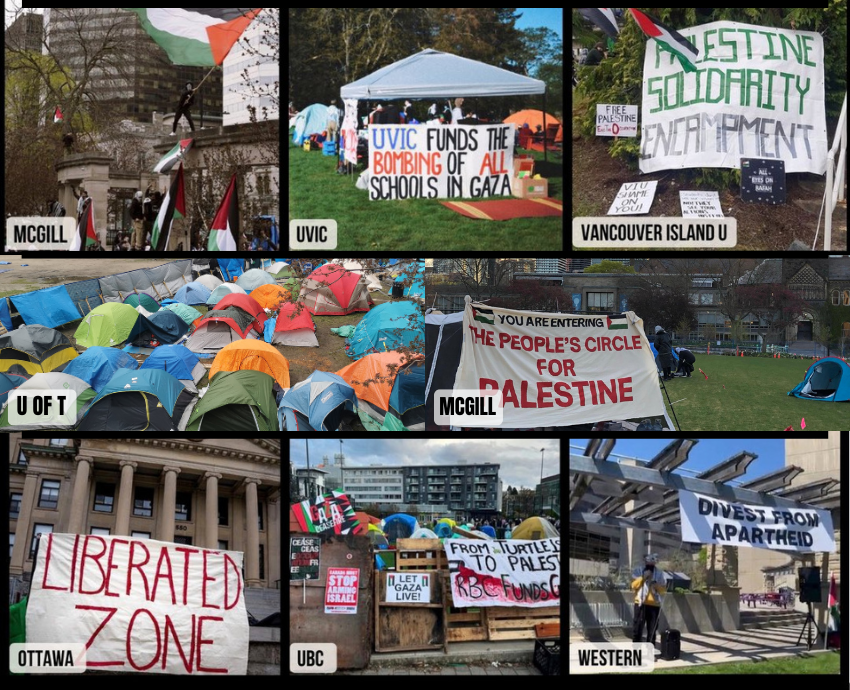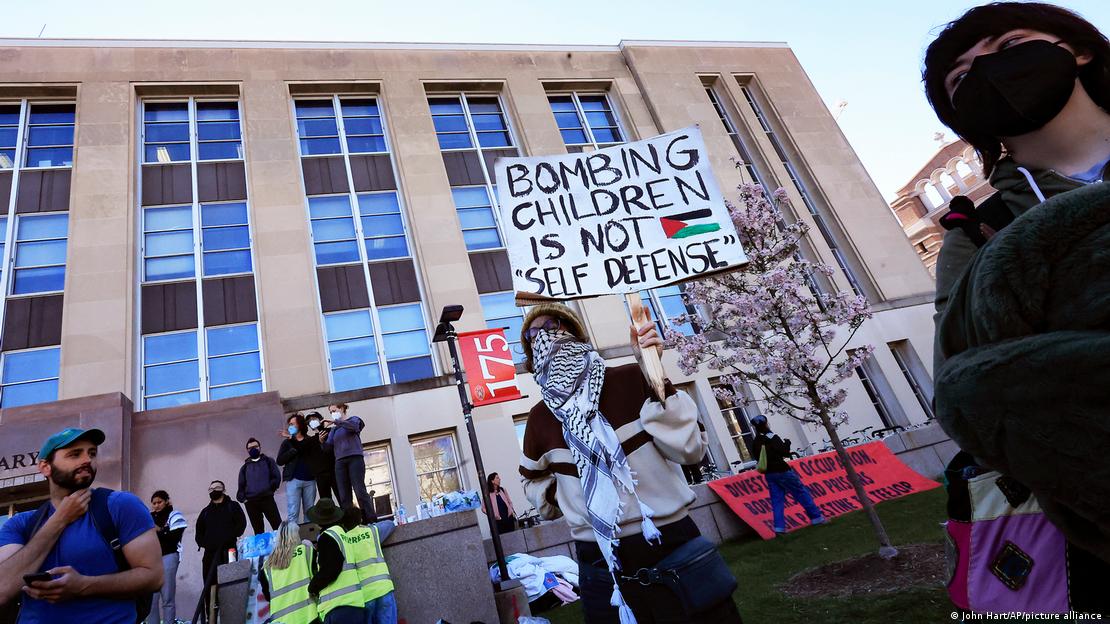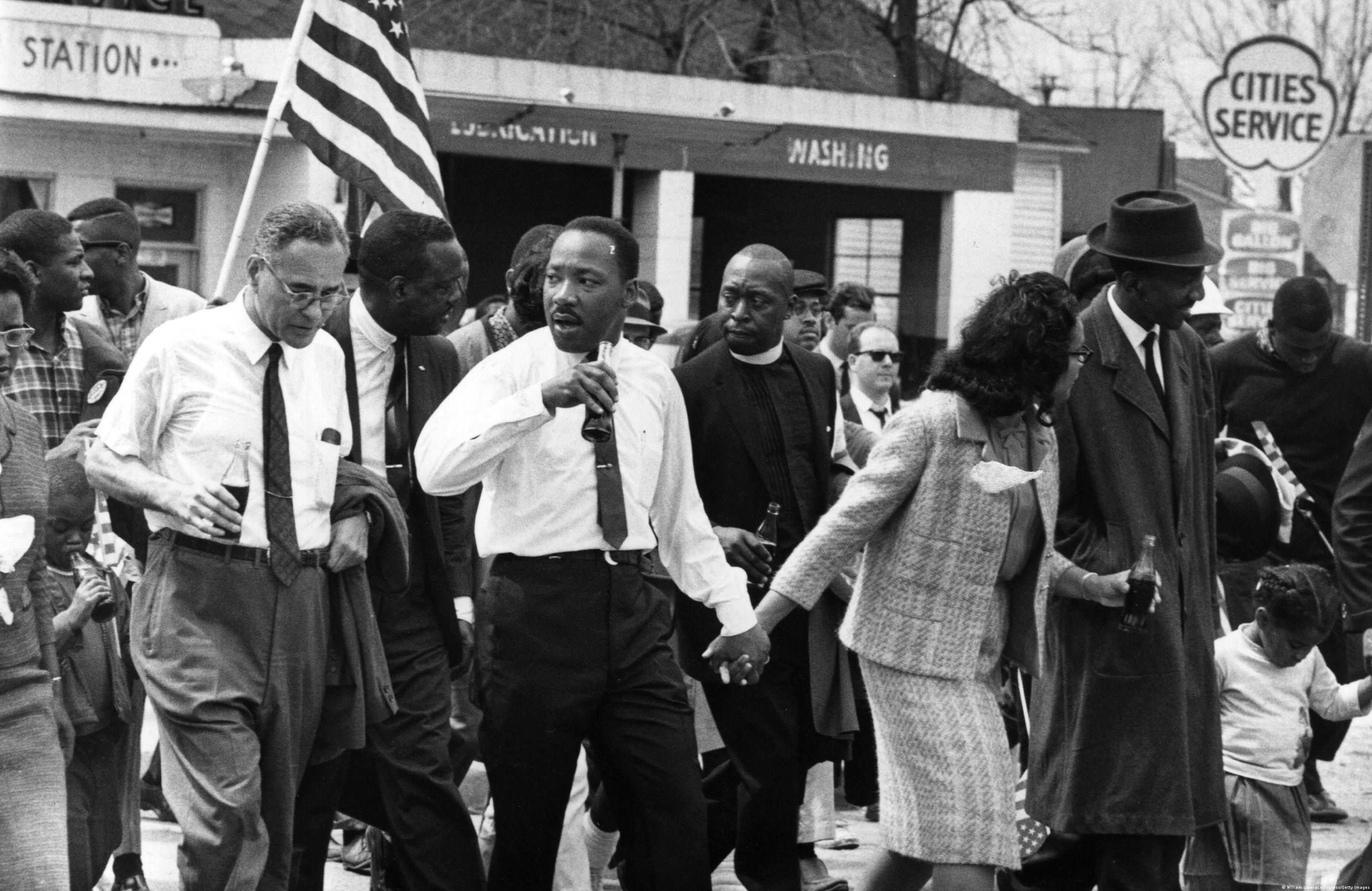Students at universities across Canada have established encampments in solidarity with Palestine, inspired by and in solidarity with university encampments across the United States.
Since the first encampment at McGill University in Montreal was set up on April 27, encampments have spread (at the time of writing) to the University of British Columbia (UBC), University of Ottawa, Western University (Western), University of Victoria (UVic), Vancouver Island University (VIU) and the University of Toronto (U of T).
Appropriately, a number of encampments were launched on May Day (May 1), the international day of celebration of workers’ struggle.
The students are focussed on divestment from Israeli state violence, occupation and genocide.
McGill
About 100 students at McGill in Montreal launched the first encampment on April 27, raising the key demand that the university divest from all companies with ties to Israel.
The encampment was initiated by students at McGill and Concordia University — the city’s other major English-language university. By the end of the week the encampment had grown more than fourfold, as more students, campus workers and community members joined in.
Reactionary opponents of the encampment sought an injunction to have it shut down. That attempt failed as Justice Chantal Masse of Quebec’s Superior Court rejected the injunction. Masse ruled that if students were removed, their “freedom of expression and to gather peacefully would be affected significantly”.
UBC
About 100 people set up tents, food tables and a people’s library on a sports field at the UBC’s Point Grey campus in Vancouver on April 29. This was the first encampment in Western Canada, followed days later by two encampments on Vancouver Island.
Students at UBC were aware of the police violence inflicted on students at US encampments. They issued camp guidelines, including “do not talk to cops or campus security” and “do not engage with agitators or counter-protesters”. The latter message was prescient as a group of Zionists showed up to confront the encampment on the first night, before leaving when it started to rain.
The UBC students’ statement said: “We commit to grounding ourselves in the cause of this encampment: solidarity with Gaza and the Palestinian people who are facing genocide. We reject co-optations and centring of anyone but the people of Palestine.”
Western
On May Day, around 100 students at Western in London, Ontario set up tents on the lawn in front of the University Community Centre, demanding that Western divest from companies arming and/or profiting from Israeli occupation and aggression.
According to the university’s September 2023 financial records, it owns “approximately $300,000 worth of equity” in weapons technology company Lockheed Martin.
Lockheed Martin says it has “strengthened the IDF’s [Israel Defense Forces] ground forces” and “supplied the Israel Air Force with fifth-generation fighter jets”.
The temporary encampment was packed up by the students at midnight, as pre-arranged. Students were disappointed that they received no response from university administrators to their demands and were only granted a meeting with the campus’ equity, diversity, and inclusion office.
They signalled that future encampments were likely if their demands were not met. Western is a fairly conservative university and some students noted that this protest was a step forward, given the university’s history.
UVic and VIU
Encampments were also launched at Vancouver Island’s two major universities on May Day. Students at the UVic and VIU in Nanaimo set up Palestine solidarity encampments almost simultaneously, calling on their respective administrations to demand an immediate ceasefire in Gaza, and divest from all companies involved in funding the Israeli military.
They are calling on the universities to publicly condemn Israel’s ongoing attacks and express support for “Palestinians’ right to resist and right of return”.
UVic and VIU students are demanding that their universities affirm that they will take no disciplinary action against any students involved in or supporting the encampments. UVic students raised the additional demand that no police be allowed on campus.
University of Ottawa
Students from the University of Ottawa and nearby Carleton University set up two dozen tents on the lawn in front of Tabaret Hall — a popular student gathering area — on the University of Ottawa campus on May Day. Protesters are calling on the university to end its investment in entities with ties to Israel and to publicly disclose all its investments.
The students were met with threats by the administration. Associate vice-president of student affairs Eric Bercier put out a widely criticised statement that said: “While peaceful protest is permitted in appropriate public spaces on campus according to our policies and regulations, encampments and occupations will not be tolerated.”
U of T
Students at U of T’s downtown campus set up dozens of tents in the recently renovated King's College Circle, a main gathering space on the campus. The site is the location of the university’s planned convocation ceremonies later this month.
U of T was subject to derision for fencing off the area after encampments were set up at other universities. The university received further scorn for sending out a campus-wide email warning students against trespassing on university property. The email said: “U of T’s lands and buildings are private property, though the University allows wide public access to them for authorized activities. Unauthorized activities such as encampments or the occupation of University buildings are considered trespassing.”
Student protesters are calling on the university to divulge the list of its institutional endowment’s investments and to divest from any and all assets that “sustain Israeli apartheid, occupation and illegal settlement of Palestine”.
Protesters are also calling on the university to cut ties with Israeli academic institutions within the occupied West Bank. Students previously took these demands to the university but have been frustrated by the university’s lack of response.
Participants have pledged to keep the encampment going until their demands are met and the university divests from Israeli apartheid. This commitment was made as the university threatened them with removal. Students were also confronted by Zionists on the first day, including members of the terrorist Jewish Defence League.
Labour solidarity
Several unions offered statements of solidarity with the students.
Unifor, the largest private sector union in Canada tweeted out this short but solid statement of solidarity with the students and against police repression on May 2: “#Students continue to be at the forefront of the anti-war movement. #Unifor stands in full support with students across #Canada and #USA standing up for #peace in #Gaza & denounce all police & other aggression to forcibly remove encampments and silence peaceful protest. #cdnpoli”
Fred Hahn, the President of CUPE Ontario, the province’s largest public sector union, tweeted the union’s support for the student activists: “The response by authorities & government to protests led by students are worker issues @CUPEOntario @CUPEOUWCC members ARE students - this is fundamentally a Labour Issue - @CUPEOntario fully supports these brave actions and calls for #Solidarity from @OFLabour @torontolabour”.
He rightly stressed that this is a labour issue, that campus workers are students, students are workers and repression of movements is a working-class matter.
For their part, the Canadian Association of University Teachers (CAUT), representing university faculty across Canada, put out a rather tepid statement: “University and college administrations fail in their duty to uphold the foundational purposes of our institutions when they limit or pre-empt peaceful protests and counter-protests. When administrators threaten or authorize the discipline or arrest of peaceful protesters on campus, they are silencing expression and censoring speech. Academic freedom cannot thrive when freedom of expression is constrained.”
The real test will be unions’ actions beyond just words of solidarity. CUPE did call for its members to turn up to support the students. The encampments and their defence could and should provide a spark for broader labour actions, perhaps even wildcats.
Jewish voices
Zionist opponents of the encampments have tried to accuse them of being anti-Jewish. However, these claims do not hold up to any scrutiny.
Jewish students, faculty, campus workers, and community members have been active in the encampments and in support of them. They have expressed opposition to Israeli state violence and against Zionist ideology justifying occupation and genocide against Palestinians.
A group of U of T faculty, including the campus chapters of the Jewish Faculty Network, Faculty for Palestine and Health Workers Alliance for Palestine, put out a strong statement in support of the student encampments, affirming: “University students must be allowed to protest one of the central humanitarian crises of our time without fear of disciplinary measures.”
It remains to be seen how each university administration will engage the students. McGill has already contacted Montreal police. There is a very real possibility that calls for peace will be met with extreme police violence — as has happened at universities across the US.














